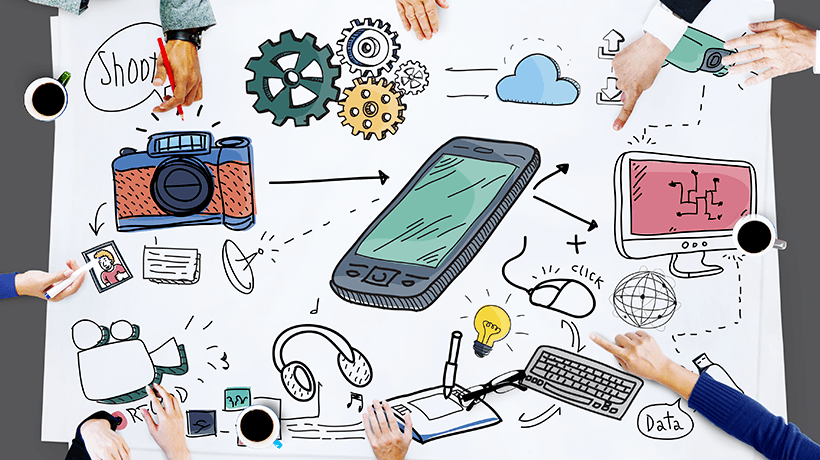An Ode To Technology And Its Critical Role In Making Education More Effective: How Technology Benefits Learning
First, I make no apologies for this article – it is an unabashed fan letter listing the many ways in which technology benefits learning and is making it more engaging and effective.
Technology is making our world more interesting… it is changing our perspectives… it is redefining previous definitions of normal. Technology has become the great disruptor; the magic wand that gives us the power to make or do things that were previously unthinkable. Technology has changed the way we work and the way we interact. A life without technology today is beyond comprehension. To the millennial generation, technology is a natural extension of their selves. So, naturally, there has to be a technology angle to everything that has anything to do with them. Oliver Wendell Holmes, the US author and physician, said: “Man's mind, once stretched by a new idea, never regains its original dimensions.”
Technology And The Learning Industry
Technology in our lives is that idea that is giving us the opportunity to do better and be better. It is changing the way we process and understand things and is changing the way we learn. The learning industry fell to the charms of technology an age ago – and the affair has only bloomed since! Technology benefits learning by taking it out of physical classrooms and putting its controls in the hands of the learner. Considering that there are more mobile phones than people on this planet and that more than 45% of the world is connected via the internet, learning providers have more avenues to make learning more effective using technology.
The rise of mobile devices and greater internet connectivity has certainly changed the way learning is disseminated, whether it is in the conventional classroom or in online learning. Computers and mobile devices such as iPads are now an integral part of classroom teaching and are allowing students to work at their own pace and use online and digital applications to do complex work. Right from kindergarten to higher education, mobile technology is engaging and enabling the student to learn better.
While eLearning providers, rightly, place a strong emphasis on learning content, a great Learning Management System or LMS allows learning providers create, manage, and deliver better content, as well as monitor the performance of the learners with the help of tracking and reporting tools. Here too, technology is making learning more effective by assessing the capabilities of the learners, manipulating their learning pace, and offers learning providers the opportunity to easily upgrade their courses or modules as and when needed with the aid of strong data.
Virtual And Augmented Reality
Technology has also made the classroom more interactive. Technologies such as virtual reality, augmented reality, and gamification find a comfortable spot in the learning landscape. Today we find many schools adopting the Google Expeditions Kit to take students on field trips across the world and sometimes even across time zones. With the help of a Mattel View or a Google Cardboard, any smartphone becomes a Virtual Reality Device. With technology we also see gamification experiences become more immersive. With sophisticated game graphics, gamification is becoming an integral part of the Instructional Design as it makes content more compelling, engaging, and appealing and thus enhances learning. Gamification technology gives Instructional Designers the opportunity to make boring content more interesting and gives the subject more incentive to complete a particular module bringing in performance benefits.
Wearable technology too is working hard to make learning more effective. With greater adoption of mobile phones and tablets, wearable devices find themselves becoming more comfortable in the classroom. A study by eMarketer suggests that wearable devices will have 81.7 million users by 2018. Technavio expects the use of wearable devices in the classroom to grow at a CAGR of nearly 46% by 2020. This is so because this technology has the potential to take two-dimensional learning and make it three-dimensional. Wearable technology has specially made product training more efficient by providing more immersive learning experiences, providing real-time post training support.
Data And Cloud Technology
One of the greatest ways in which technology benefits learning is the data it generates. This data, big and small, is of vital use when it comes to identifying avenues to make their learning programs more engaging and more effective. Big Data is being leveraged in the enterprise to identify who needs training, determine the frequency of the training, assess how the students are interacting with the course and providing an opportunity to solicit real-time feedback from these students. With the advent of the age of personalization, Big Data is giving learning providers the insights they require to deliver better and more relevant content to their learners.
While we are on the topic of the role of technology in making learning more effective, how can we not speak of the omnipresent cloud? With the rise of cloud technology in education, the world is our classroom. The complementary relationship of mobile devices with cloud technology is placing the control of learning in the hands of the learner. With cloud technology, learning truly becomes anytime, anywhere since learning modules, documents, videos and other such learning resources can be housed in the cloud and accessed via mobile devices.
Final Thoughts
The learners of today are moving from being passive recipients of content to becoming more active participants in the learning process making learning more student-centric. The emphasis to provide great learning experiences thus becomes all the more important and imperative in the education eco-system as learners move away from the mold of being “content-receptors”. The future of learning is all about enabling learning anywhere by improving access and increasing collaboration, both locally and globally… And technology is the ultimate enabler in this regard.








